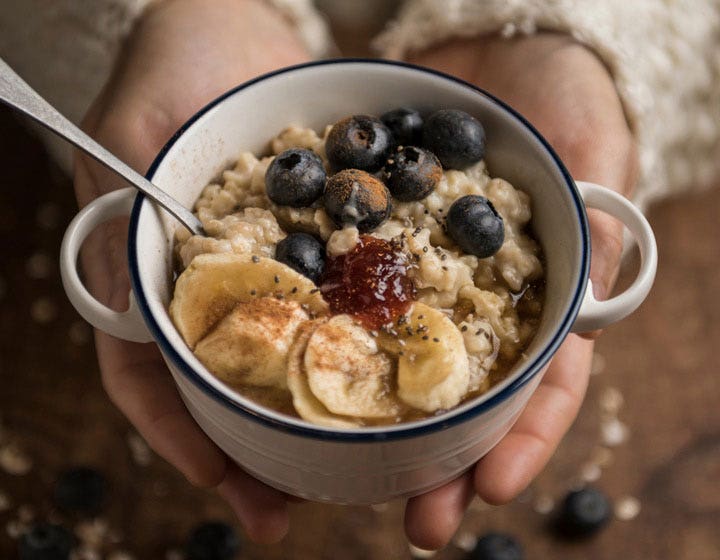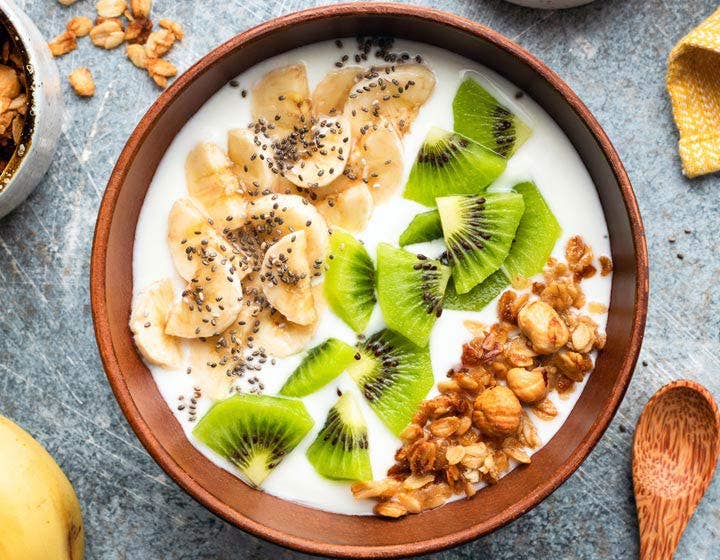
Diabetic nutrition and diet - comprehensive guide

According to the Centers for Disease Control and Prevention (CDC), 37.3 million Americans have diabetes, which amounts to 11.3% of the U.S. population. As many as 8.5 million of these cases are undiagnosed, meaning many people are experiencing symptoms of diabetes without knowing the cause.
Though diabetes can’t be cured, studies show that it’s possible to reduce the effect of the disease and protect yourself from developing it in the first place by managing your diet. One 2017 study published in the Journal of Geriatric Cardiology found that diet and lifestyle changes lowered the risk of developing type 2 diabetes by 71% in adults over 60. Dietary alterations also led to a reduced risk of diabetes in other age groups.
The CDC also notes the importance of diet: “Managing blood sugar is the key to living well with diabetes and eating well is the key to managing blood sugar.” However, to properly manage blood sugar levels through your diet, you first need to understand how diabetes works, important concepts like the glycemic index and how different food groups can impact the body.
An overview of diabetes
The National Institute of Diabetes and Digestive and Kidney Diseases (NIDDK) defines diabetes as what “occurs when your blood glucose, also called blood sugar, is too high. Glucose is your body’s main source of energy.”
The NIDDK goes on to explain that people with diabetes have a deficiency of insulin, a hormone necessary for turning glucose into energy. As a result, the glucose stays unused in the bloodstream. This abundance of blood sugar is what can result in long-term health issues related to diabetes, including loss of hearing or vision, infections that don’t heal, cardiovascular problems and kidney and nerve damage.
There are three main types of diabetes:

Type 1 diabetes
Type 1 diabetes occurs when the immune system mistakes insulin-producing cells for infection and eliminates them. People with this kind of diabetes typically need to take supplementary insulin to stay alive. Without this outside assistance, the body would not convert any glucose to energy. Type 1 diabetes is usually inherited from both parents, though environmental factors may also play a role.

Type 2 diabetes
The CDC estimates that, of the 37 million Americans with diabetes, 90% to 95% of people with diabetes have type 2. With type 2 diabetes, the body still produces insulin but doesn’t respond effectively to the hormone or use it efficiently.
Genetics can also play a role in type 2 diabetes. However, lifestyle factors — such as lack of physical activity or higher body weight — can contribute to the development of this condition.

Gestational diabetes
Gestational diabetes affects people who are pregnant, as hormonal changes due to pregnancy can affect the way the body uses insulin. Unlike the other forms of this disease, gestational diabetes typically goes away after giving birth. However, if you do have gestational diabetes, you may re-develop the condition in future pregnancies.
Symptoms of diabetes
Diabetes has a range of symptoms, including:
- The frequent urge to urinate
- Excessive fatigue
- Unexpected weight loss
- Vision problems
- Continued hunger after eating
- Chronic infections
- Slow-healing cuts and bruises
People with type 1 diabetes may feel nauseous or have persistent stomach pains. In some cases, you may vomit for no apparent reason.
Other people experience subtle symptoms that escape notice or are hard to define, especially during the early stages of the disease. For this reason, it’s essential to understand common risk factors and get regular blood tests to detect the condition earlier when it’s easier to manage.
Understanding glycemic index
According to the Academy of Nutrition and Dietetics, the glycemic index (GI) is defined as “a measure of how quickly a food causes our blood sugar levels to rise.” This scale goes from 0 to 100 and includes all foods with carbohydrates.
Pure glucose has a GI of 100 and foods without carbs — such as unprocessed meats like beef and chicken — have a GI of 0. Foods lower on the GI scale increase blood sugar gradually, while high GI foods cause blood sugar spikes.
To manage diabetes through your diet, you generally want to avoid high GI foods and ingest low GI options instead. Here’s a look at the GI categories and common foods in each one:
High GI foods
Foods on the highest third of the GI have a score of 70 or higher. The body breaks them down quickly, causing a rapid blood-pressure spike. Foods in this category include:
- White bread
- White rice
- Processed snack foods
- Sugary drinks
- Desserts
- Candy and cookies
- Cereals with added sugar
- Potato-based foods like french fries
- Doughnuts

Gradually increasing blood sugar levels tends to be a more effective way to manage symptoms, so, in general, people with diabetes should avoid high-GI foods.
Medium GI foods
Medium GI foods have a moderate impact on blood sugar levels. Common moderate GI foods include:

- Whole grain bread and other whole wheat products
- Couscous
- Basmati rice
- Bananas
- Oatmeal
- Raisins
Foods with GI scores of 56 to 69 fit into this category. Though you can eat these foods if you have diabetes, it’s important to do so in moderation.
Low GI foods
Low GI foods have a GI rating of 0 to 55. Common foods in this category include:
- Green vegetables
- Carrots and other non-starchy root vegetables
- Barley
- Other whole (unprocessed) grains
- Nuts
- Beans
- Apples
- Most citrus fruits
- Whole oats
- Milk
- Unsweetened or sugar-free yogurt
- Seeds
- Bran cereals with low or no sugar

Because the body processes and digests these foods more slowly, they have a more gradual effect on blood sugar. Simply put, eating low GI foods makes it easier to control your glucose levels.
General guidelines for a diabetes-friendly diet
Though it’s a useful framework, the GI does not provide enough information on its own to guide all dietary decisions. Instead, it provides insight to assist with the overall planning of a diabetes-friendly diet.
You’ll need to consider several other factors and guidelines to effectively manage your diabetes through nutrition. This can mean contending with a variety of direct and indirect challenges in accessing and maintaining a healthy diet.
Be mindful of carbohydrates
Carbohydrates have an impact on glucose levels in your body. The CDC explains that carbs come in three forms: sugar, starch and fiber. Sugar and starch raise your glucose levels, but fiber doesn’t because the body can’t digest it.
High-fiber foods are important for a diabetes-friendly diet, as they make you feel full, help with weight management and generally help maintain your digestive health. Whole grains and legumes provide plenty of fiber, as do fruits, vegetables and nuts.
Complex carbohydrates contain more nutrients and your body processes them more slowly, helping to keep your blood sugar levels low. Whole grains (like whole wheat bread, brown rice and quinoa) fit into this category, as do beans, lentils and non-starchy vegetables (like carrots and broccoli).
You should avoid processed grains like white rice and white bread and limit foods with added refined sugars.
Eat enough protein
Protein can make you feel full and help stabilize blood-sugar levels because it doesn’t cause a blood sugar spike. Typically, a balanced diet should contain 10% to 35% protein.
Fried or fatty protein sources can cause weight gain. If you have diabetes, you should opt instead for skinless chicken, fish, eggs, low-fat milk, Greek yogurt, tofu, legumes and lean meats.
Consume beneficial fats
Monounsaturated and polyunsaturated fats promote heart health by lowering low-density lipoproteins (or LDL cholesterol) in your blood and reducing the risk of stroke and heart attack.
These beneficial fats are in avocados, nuts, olive oil, peanut butter, chia seeds, eggs and tofu. Fats are often calorie-dense, so portion sizing is essential to getting benefits while managing your weight.
Avoid sugary and sweetened beverages
Any beverage with added sugar can spike blood sugar levels. People with diabetes benefit from a low-sugar diet, so you should avoid sodas, sweetened tea or coffee and fruit juices. Herbal teas, water and unsweetened sparkling water are good sugar-free substitutes.
Stick to a regular meal schedule
Spacing meals at equal intervals throughout the day will help regulate carbohydrate intake and stabilize blood sugar levels. Additionally, if you eat an equal amount of carbs at each meal during the day, you’ll be less likely to experience the blood sugar spikes that exacerbate diabetes symptoms.
Plan your meals
It can be a good idea to seek expert advice for a diabetes-friendly diet plan. A registered dietician (RD) or registered dietician nutritionist (RDN) knows how to create a personalized meal plan that meets both health needs and food preferences. RDs and RDNs can also assist with meal timing and give you insights and tools to count calories and carbohydrates and deal with other issues — such as weight loss — that can help you manage your diabetes.
Medical nutrition therapy
Though there’s a lot you can do on your own, you’ll also want to consider seeking out professional help for diabetes management. One of the most common sources of support is medical nutrition therapy (MNT), an evidence-based method for treating specific diseases and conditions using diet. MNT is provided by an RDN or other qualified nutrition professional. The American Diabetes Association recommends MNT as part of a comprehensive diabetes management program.
MNT seeks to prevent diseases and provide nutritional benefits with three sequential steps:
1. Nutrition assessment
In addition to assessing your and your family's medical histories, the RD or RDN will likely ask about exercise, current dietary habits and other lifestyle practices. They may also order lab tests to get a complete health picture.
2. Personalized nutrition plan
Based on the initial interview and your lab results, the RDN will design a comprehensive diet plan for you. This will include information on calorie, carbohydrate and sugar intake amounts. It will also highlight any modifications or changes you have to make to address your diabetes and improve your ability to manage it.
3. Nutritional education and counseling
MNT also includes educational and counseling support as you put your dietary plan into action and maintain it for the long term. In addition to meal planning and carb counting, the training portion of MNT can help you understand some of the nuances of diet planning, such as reading labels and portion control.
With this support, you have a better chance of developing sustainable dietary habits.
Dining out with diabetes
With the assistance of a dietician and careful meal planning, you can manage a diabetes-friendly diet and still go out to eat. Restaurants can fit into your dietary plans if you think ahead and are careful with your food selections.
Plan ahead
Most restaurants publish their menus online so you can get information about available dishes. Researching menus ahead of time allows you to see what ingredients each dish contains and verify if their offerings fit your diet. If a restaurant doesn’t have something that will work for you, ask whether they can accommodate substitutions or alterations to their dishes.
Some restaurants may also have more detailed nutritional information available. Chains with 20 or more locations are required by law to provide certain nutrition information, so you’re more likely to get a complete nutritional breakdown from larger restaurant establishments.
Control portions
You can manage portion size, as well as calorie and carb intake, by dividing the dish. Take part of it home for later or request that the restaurant make a smaller portion for you. Another option is to order from the appetizer menu so that you can enjoy smaller portions.
Be mindful of beverages
Again, sodas and sweetened beverages can spike blood sugar levels. You may order a beverage as an afterthought, only to have it ruin your carefully-planned meal choices. Stick to still or sparkling water or unsweetened teas. If you have an alcoholic beverage, enjoy it in moderation.
How can restaurants support patrons with diabetes?
Restaurants can cater to all types of patrons and since 11.3% of Americans have diabetes, chances are most eateries will offer something suitable to eat for those who do.
Trends in reduced-sugar consumption and healthier eating mean there are more resources for chefs seeking to cater to people with varying dietary needs. Below are some steps eateries and food manufacturers can take to provide healthier foods and beverages and cater to the needs of patrons with diabetes:
1. Provide nutritional information
Diabetes diets require careful planning and information about calories, ingredients and carbohydrate counts. The more information a restaurant can provide, the more accessible it will be for people with diabetes.
2. Accommodate special dietary requests
Restaurants should be willing to provide substitutions to diners who ask for them where possible. Using whole grains, reducing sugar, using sugar substitutes and reducing carbohydrates in a dish can accommodate individuals with diabetes. What’s more, a substitution policy benefits people with allergies and other conditions aside from diabetes, making your restaurant more accessible to even more people.
3. Alter portion sizes
Offer smaller portion sizes or half-servings to accommodate those who want reduced calorie or carb intake.
4. Consider non-starchy vegetable options
Popular side dishes like french fries add to calorie and carb counts. Offering fiber-rich, low-carb alternatives — like salads, broccoli, mushrooms and peppers — can help reduce the overall impact of a meal on someone with a strict diabetes diet.
5. Provide sugar-free or low-sugar options
Food experts have developed low-sugar and sugar-free alternatives for beverages, desserts, condiments and other treats restaurant patrons expect. Specific sugar-reduction ingredients can lower glucose levels in food without compromising taste.
Alternatives like stevia and allulose offer sweetness without traditional sugar and products like VERSA SWEET can meet the needs of patrons who need to limit (but not eliminate) sugar intake.
Finally, a restaurant can adjust ingredients and preparation techniques to modify the flavors of a dish so that it meets taste standards without added sugar. You can also seek sugar-reduction resources to learn how to create dishes that take the needs of patrons with diabetes into account.
6. Train restaurant staff
Restaurants should make both front-of-house and kitchen staff aware of special dietary needs. Since diabetes is a common condition, management can teach waitstaff about the specific needs of people with this condition so they can make effective inquiries and learn about different requirements.
Sensitivity and receptiveness should be major components of that training. Patrons want to enjoy their time out without having to feel like their request is unwelcome. Receptive staff and established policies can make accommodating diabetes diets straightforward.
With the right plans, policies and practices in place, restaurants can easily accommodate patrons with diabetes and other dietary needs.
1National Diabetes Statistics Report, Centers for Disease Control and Prevention, 2022
2A plant-based diet for the prevention and treatment of type 2 diabetes, Journal of Geriatric Cardiology, 2017
3Eat Well, Centers for Disease Control and Prevention, 2022
4What Is Diabetes?, National Institute of Diabetes and Digestive and Kidney Diseases, 2023
5Type 1 Diabetes, National Institute of Diabetes and Digestive and Kidney Diseases, 2017
6Learn the Genetics of Diabetes, American Diabetes Association, n.d.
7Type 2 Diabetes, Centers for Disease Control and Prevention, 2023
8Symptoms & Causes of Diabetes, National Institute of Diabetes and Digestive and Kidney Diseases, 2016
9Treatment & Perspective, American Diabetes Association, n.d.
10Diabetes Symptoms, Centers for Disease Control and Prevention, 2022
11What Is Glycemic Index, Academy of Nutrition and Dietetics, 2019
12Glycemic index and diabetes, National Library of Medicine, 2022
13Get Smart On Carbs, American Diabetes Association, n.d.
14Fiber: The Carb That Helps You Manage Diabetes, Centers for Disease Control and Prevention, 2022
15Understanding Protein, Diabetes Teaching Center at the University of California, San Francisco, n.d.
16Fats, American Diabetes Association, n.d.
17Diabetes Meal Planning, Centers for Disease Control and Prevention, 2023
18REGISTERED DIETITIAN (RD) OR REGISTERED DIETITIAN NUTRITIONIST (RDN)* CERTIFICATION, Commission on Dietetic Registration, n.d.
19Medical Nutrition Therapy, ScienceDirect, n.d.
20Nutrition Therapy for Adults With Diabetes or Prediabetes: A Consensus Report, Diabetes Care, 2019
21Menu Labeling Requirements, U.S. Food and Drug Administration, 2020